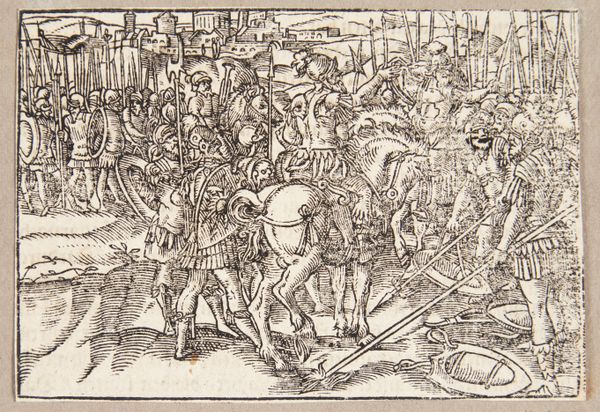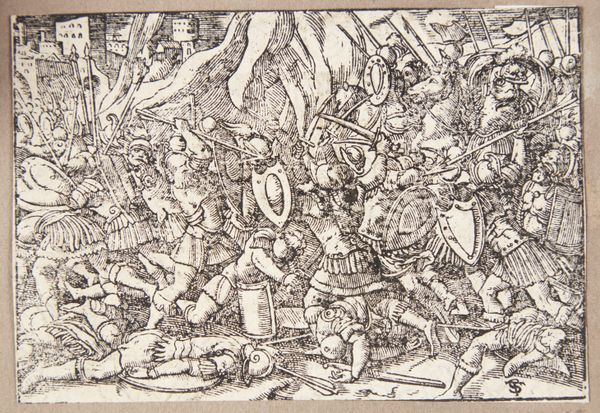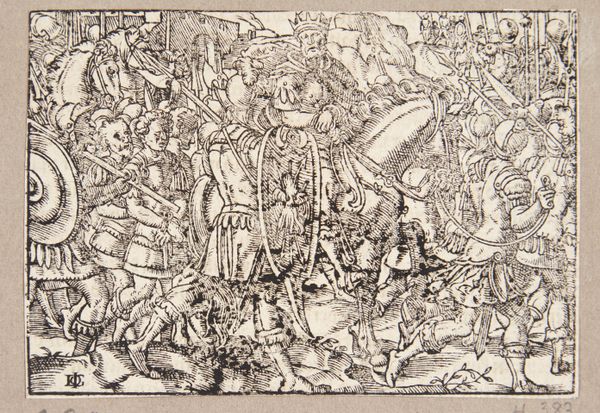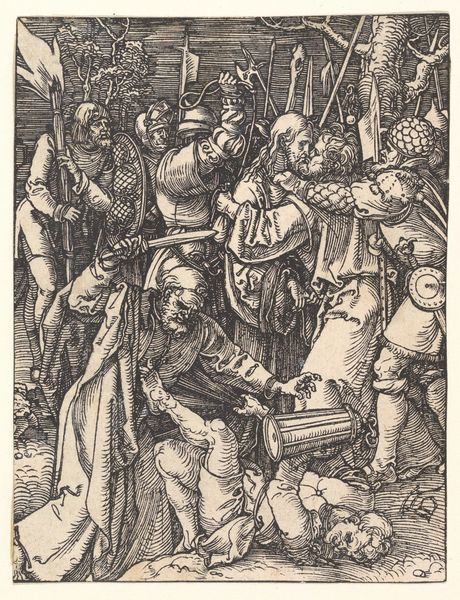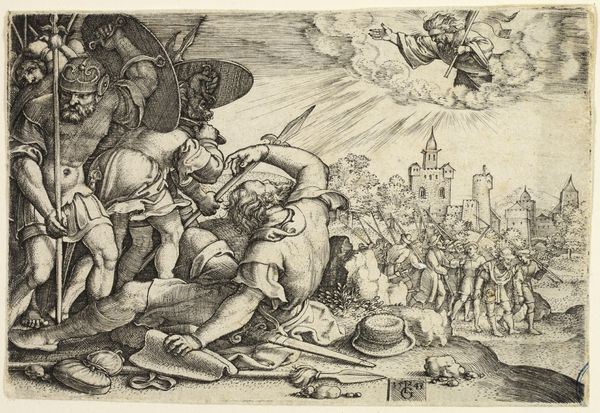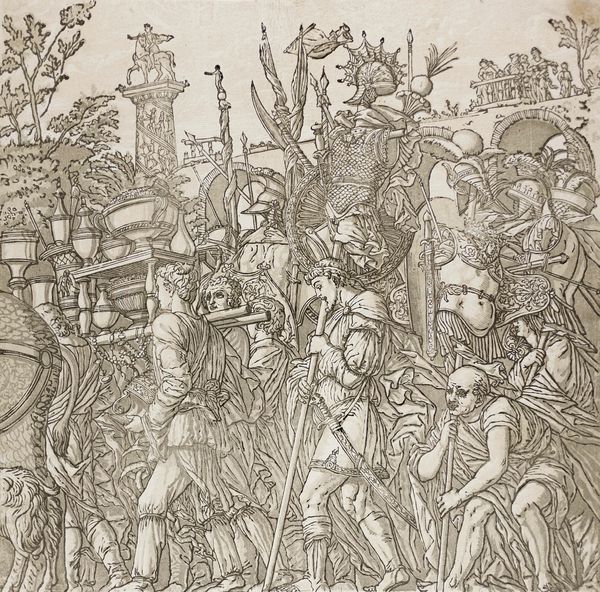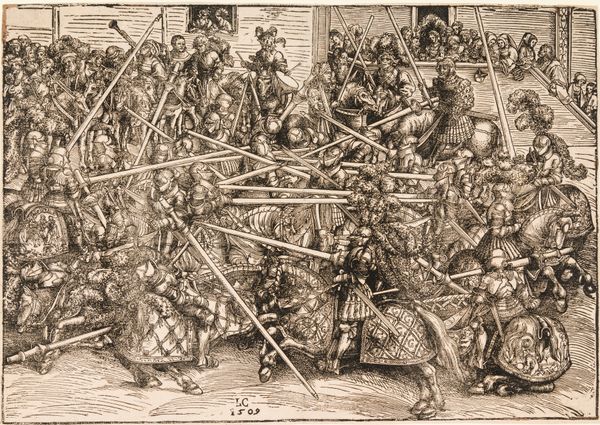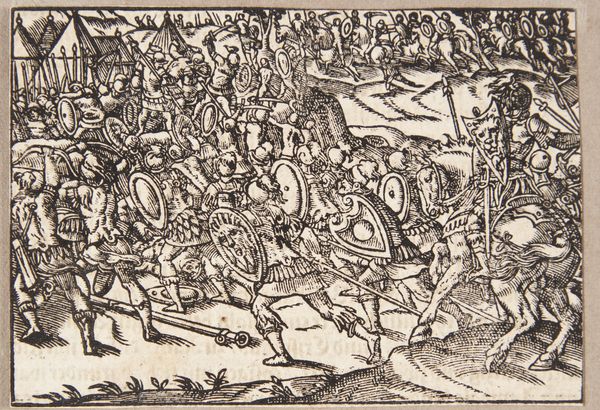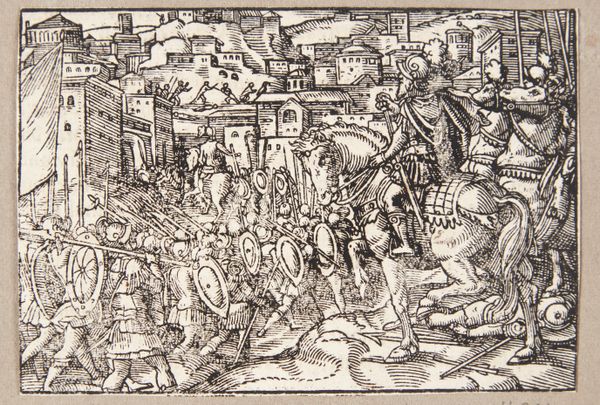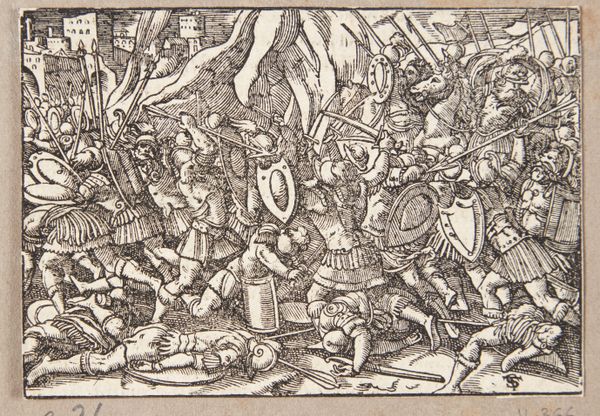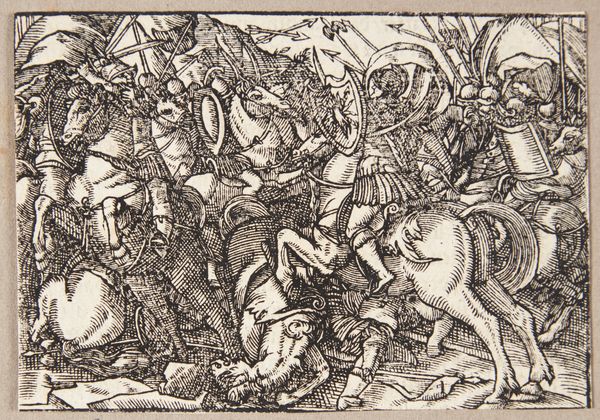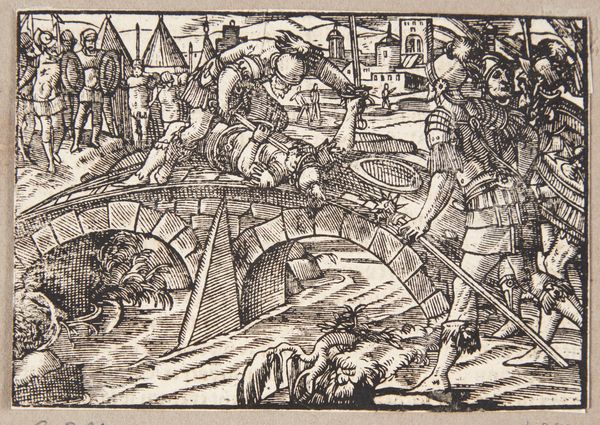
drawing, ink, engraving
#
drawing
#
narrative-art
#
ink painting
#
symbol
#
pencil sketch
#
figuration
#
ink
#
pen-ink sketch
#
genre-painting
#
northern-renaissance
#
engraving
Copyright: Public domain
Pieter Bruegel the Elder made this print, Philistine, using the technique of engraving, sometime before 1569. Engraving is an intaglio process, meaning that lines are incised into a metal plate, and these grooves hold the ink. In Bruegel’s time, this was a relatively new technology, with the effect that the marks were still very visible, the means of production undisguised. In this wonderfully grotesque scene, we see figures overwhelmed by material abundance, seemingly buried alive by goods. This speaks to the booming mercantile economy of the 16th century, when the Netherlands was becoming a center of global trade. The title, Philistine, refers to people considered to be indifferent or hostile to art and culture. Consider the labor that went into producing all the items depicted here, from baskets and barrels to textiles and tools. In Bruegel's vision, all this work has become a kind of visual and social pollution. The print’s very material—the dark lines scraped into metal—becomes a metaphor for the dark side of prosperity.
Comments
No comments
Be the first to comment and join the conversation on the ultimate creative platform.
